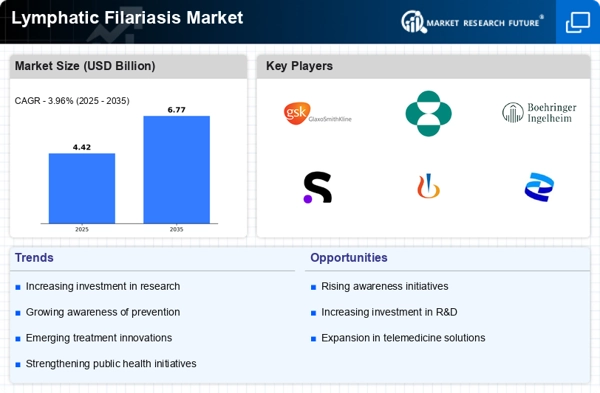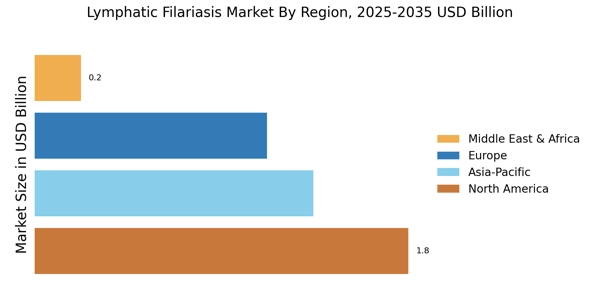Government Funding and Support
Government funding and support play a pivotal role in shaping the Lymphatic Filariasis Market. Various countries have initiated programs aimed at eliminating Lymphatic Filariasis Market, often backed by substantial financial resources. For instance, initiatives like the Global Programme to Eliminate Lymphatic Filariasis Market have mobilized millions of dollars for mass drug administration and public health campaigns. This financial backing not only facilitates the distribution of medications but also promotes awareness and education about the disease. As governments continue to prioritize the elimination of Lymphatic Filariasis Market, the market is expected to witness increased investment in innovative treatment solutions and preventive strategies.
Growing Demand for Preventive Measures
The growing demand for preventive measures against Lymphatic Filariasis Market is a significant driver for the Lymphatic Filariasis Market. As awareness of the disease increases, communities are seeking effective strategies to prevent its transmission. Mass drug administration programs, vector control initiatives, and community education campaigns are gaining traction. The World Health Organization emphasizes the importance of preventive measures in reducing the incidence of Lymphatic Filariasis Market. This heightened focus on prevention is likely to stimulate market growth, as pharmaceutical companies and health organizations develop and promote new preventive treatments and interventions.
Rising Incidence of Lymphatic Filariasis
The increasing incidence of Lymphatic Filariasis Market is a critical driver for the Lymphatic Filariasis Market. As more cases are reported, particularly in tropical and subtropical regions, the demand for effective treatment and management options rises. According to the World Health Organization, millions are affected by this neglected tropical disease, which can lead to severe disability and social stigma. This growing prevalence necessitates enhanced healthcare responses, including the development of new therapies and preventive measures. Consequently, pharmaceutical companies are likely to invest more in research and development to address this pressing health issue, thereby expanding the Lymphatic Filariasis Market.
Technological Advancements in Diagnostics
Technological advancements in diagnostics are significantly influencing the Lymphatic Filariasis Market. The development of rapid diagnostic tests and improved imaging techniques has enhanced the ability to detect Lymphatic Filariasis Market at earlier stages. These innovations facilitate timely intervention, which is crucial for effective disease management. Moreover, the integration of digital health technologies, such as mobile health applications, allows for better tracking of disease prevalence and treatment outcomes. As diagnostic capabilities improve, healthcare providers are likely to adopt more effective treatment protocols, thereby driving growth in the Lymphatic Filariasis Market.
Increased Collaboration Among Stakeholders
Increased collaboration among stakeholders is emerging as a vital driver for the Lymphatic Filariasis Market. Partnerships between governments, non-governmental organizations, and private sector entities are fostering a more coordinated approach to combatting Lymphatic Filariasis Market. These collaborations often result in shared resources, knowledge, and expertise, which can enhance the effectiveness of treatment and prevention strategies. For example, joint initiatives may lead to the development of comprehensive health programs that address not only Lymphatic Filariasis Market but also other related health issues. This synergy is likely to create a more robust market environment, encouraging innovation and investment.


















Leave a Comment